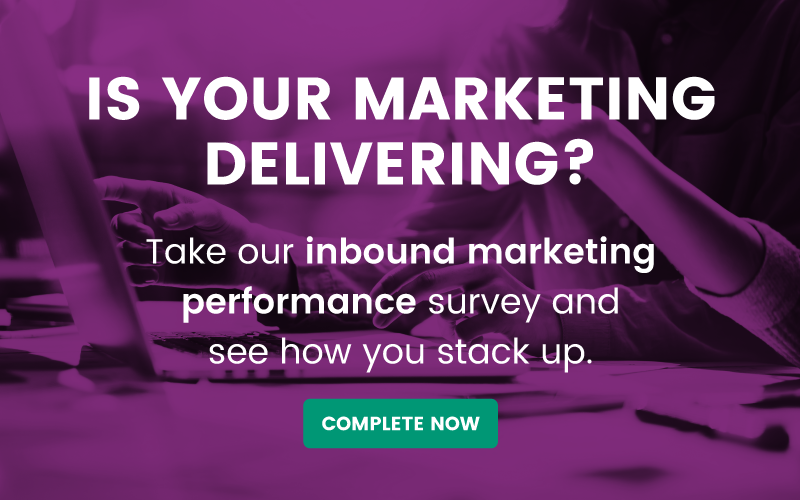It’s extremely important to help internal stakeholders and decision makers understand that the transition to inbound is one that any forward-thinking and growth-oriented business must make. It’s not just about changing legislation restricting the scope of outbound marketing, it’s about the changing nature of the way people buy products and services and the way they want to be marketed to. As someone who’s been in the position of an in-house marketer trying to get the wider business along for the ride on inbound, here are some of my tried and tested tips for getting internal buy-in on inbound marketing.
Relate it back to them and their own experiences
When faced with questions like “why can’t we just send an e-shot out like we did last time?” or “let’s do some telemarketing, it worked well before didn’t it?” it can be difficult as a marketer to frame a response. As mentioned before, it can be tempting to opt for the easy life, go with the flow and nod and smile.
But remember why you’re doing this – it’s the right thing to do.
One way I’ve found to be quite effective in getting people to understand your point of view is to relate the scenario back to them and their personal experience as a consumer. An analogy for internal buy-in on inbound marketing I’m fond of using is buying a car. If you walk into a BMW dealership with the intention of buying a car, the process most likely hasn’t been; someone cold-called you asking if you wanted to a buy a BMW, awakening a fire of inspiration inside of you that resulted in you marching straight into your local dealership slapping your cheque book on the counter and shouting “ONE OF YOUR FINEST AUTOMOBILES GOOD SIR, POST-HASTE!” That’s just not how it works. You’ll have started with a problem: your current car is old and needs replacing, or you need more space because you’re starting a family. You’ll then carefully research the options based on your budget, compare them, perhaps ask for recommendations from your friends and family. Then, and only then, might you decide to venture into the lion’s den which is a car dealership. Because you’re armed with information, you know what you want and you’ve reached the decision to purchase in your own sweet time.
You might think this is a bit of an extreme example, particularly as buying a car is a significant investment, but if your business is dealing in projects, products and services worth tens or hundreds of thousands of pounds, it’s a significant investment for your customers.
Explain the context
If you’re not absorbed in the day-to-day mire of being a marketer, you can be forgiven for not having your finger on the pulse of the constantly changing marketing landscape: the practices and parameters that dictate what marketers do and what makes them successful.
Remember this when you’re extolling the virtues of inbound. Take your audience on a journey. Talk about the origins of the inbound philosophy, why it came about. Explain this in the context of the people they really care about: the customer. Statistics like “81% of shoppers conduct online research before buying” and “65% of consumers spend 16+ minutes comparison shopping before making a purchase” can be very helpful in putting the importance of good content in perspective for them.
And that’s not to mention imminent legislation changes which are set to make outbound marketing more and more difficult. Telemarketing and mass emails are going to completely die in the consumer space under GDPR, and if the ePrivacy regulations end up being really tight, that could very well follow in B2B too. Just mention the potential fines of 20 million Euros or 4% of annual turnover if in breach of GDPR, that ought to prick their ears up.
Manage their expectations
While extolling the virtues and the potential returns of the internal buy-in on inbound marketing methodology is important – it’s also important to set the expectations of stakeholders in the business. Key to the success of your inbound strategy will be to ensure they understand that results aren’t going to happen overnight. Nothing’s going to make your brand spanking new strategy fall flatter than you setting unrealistic timescales and having nothing to show for your efforts.
While “this is a marathon, not a sprint” is a cliche, it bears repeating when it comes to properly investing in inbound. After all, it involves a lot of upfront work – persona development, keyword research, content planning, content production. Take your colleagues through your process and help them understand how you’ll execute this strategy and give them some realistic timescales on when you expect to start seeing traction.
This particular tactic can be the most tricky to get right – you don’t want to paint the picture of a long slog uphill to get results, but you also don’t want to suggest that it’s going to be quick and easy. This can be particularly tricky when the management team have to do everything with their eye on the bottom line. That’s why the next tactic is a great one to keep in your pocket for when things get tough.
Be prepared to take a blended approach
Taking away the classic “this is the way we’ve always done it” mentality, any change in business process or strategy is going to shake things up and take some getting used to. And as you’re not operating in a vacuum, it’s important to remember there’s probably going to be nervous twitching around abandoning the outbound model completely. Outbound activity makes people feel busy, it makes them feel proactive and like they’re making every effort to drive performance.
In this situation, a flat “no” when someone asks if you can put an e-shot together isn’t always the best idea. An approach I’ve found quite useful in this situation is to think about what the person who’s asked for this is trying to achieve, and trying to reach some sort of compromise. If they want to send an email out, why not ask them to curate a small list of customers to target with it? This helps them to begin to understand the thinking behind inbound and highly targeted and useful content without forcing them to make the stark decision to “do nothing”.
Stick to your guns
Getting a business to invest in internal buy-in on inbound marketing is difficult. Taking the wider business on the journey with you and being prepared to be flexible is key to making it work. Stick with it, and within 6 months to a year, you should have the numbers to allow the strategy to speak for itself.



